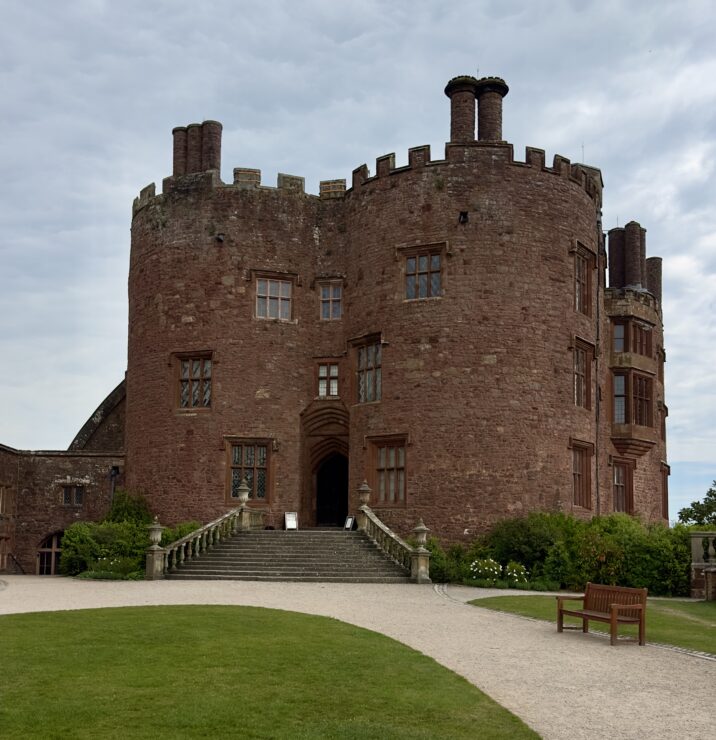If you’ve seen one castle, you haven’t seen them all on a luxury road trip through Wales. Not with more than 400 scattered around the country.
After leaving the Palé Hall estate in the North, on day four, we head east towards Welshpool. It’s the longest leg of our grand road trip tour of the luxurious lifestyles of the rich and famous. From here, we’ll wind our way south to Mid- and South-East Wales before ending our journey in Cardiff.
Along with notable castles, here are a few of the highlights we experienced along the way.
For the Love of the Welsh Language
Now we’re used to seeing bilingual signs in Welsh and English. Welcome signs (Croeso, CROY-so) greet us in gift shops and castles. Signs in Welsh adorn entrances to luxury estates (Cymru, KEM-mer-ee). When locals say, Croeso y Cymru, “Welcome to Wales,” we respond in our best Welsh, Diolch, DEE-olch, “Thank you.”
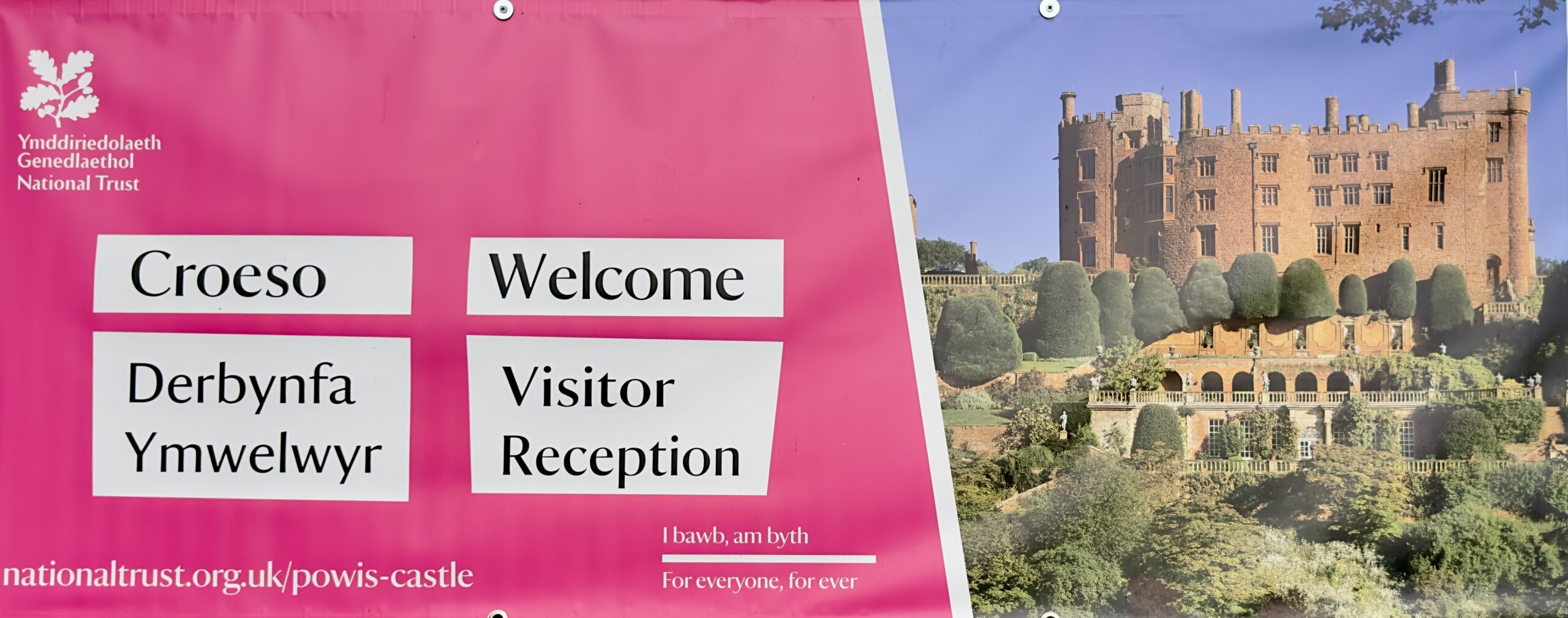
Welcome sign in Welsh and English © Nancy Mueller Photos
We stop there. We could try adding Diolch o galon (DEE-olch o gah-lon), “Thank you from the heart.” But anything more than that induces quizzical looks and head scratches from locals. Best not to push our luck.
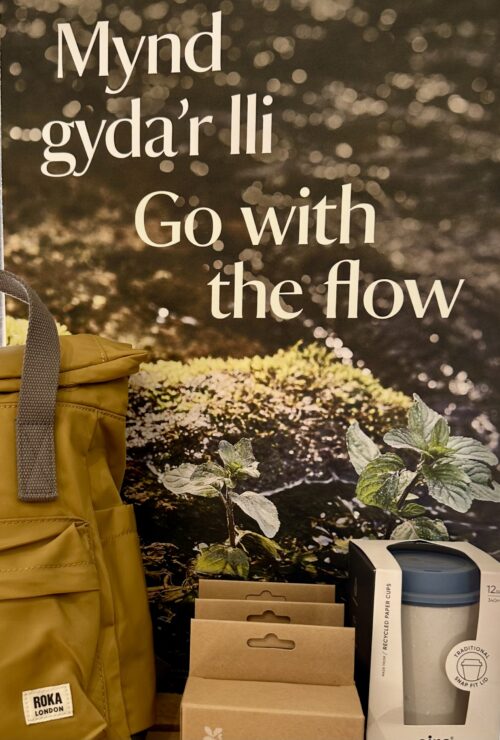
Go with the flow when trying to speak Welsh © Nancy Mueller Photos
Powis Castle and Garden
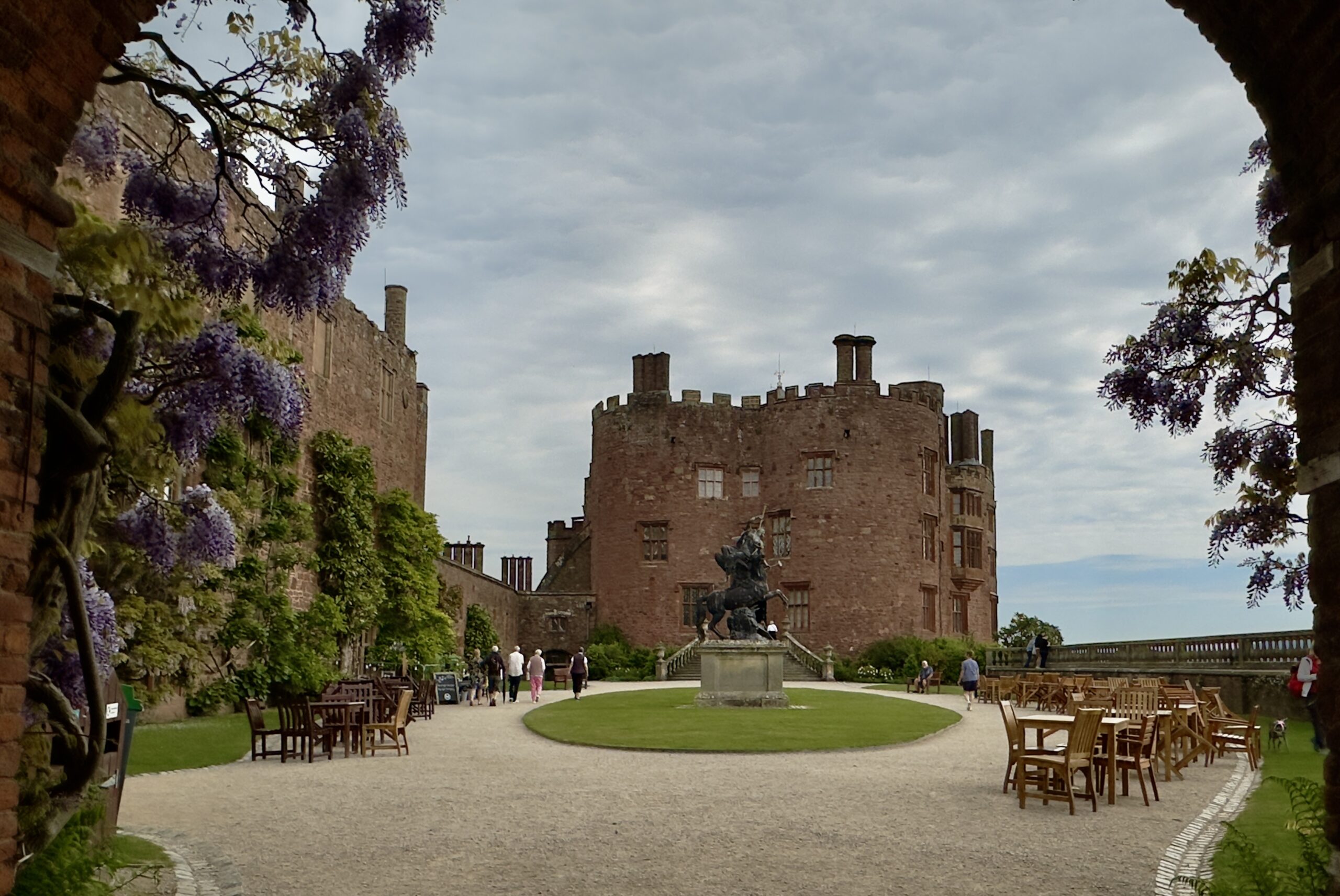
Entrance to Powis Castle and Garden © Nancy Mueller Photos
We arrive mid-morning at Powis Castle and Garden, under the care of the UK’s National Trust. One look at the massive red edifice crowning a hilltop leaves a lasting impression. It clearly belies the belief, “If you’ve seen one castle, you’ve seen them all.” Not until you’ve seen Powis Castle.
We enter the courtyard through an open arched doorway laden with fragrant wisteria. A dramatic sculpture greets us in the form of a winged trumpeting figure of Fame borne aloft by Pegasus.
Welsh prince Gruffudd ap Gwenwynwyn built Powis in the 1200s. Since then, the estate has seen its share of renovations over the centuries. Attacks by competing forces and a succession of lordship families moving in and out led to the Castle’s serious neglect and deterioration. Along came Lord Powis in the mid-1500s, who began renovating the property. Today, Powis has been transformed into a grand country estate.
The Clive Museum on site houses a significant, eclectic mix of South Asian artifacts. Not without controversy, these antiquities span the periods of Britain’s colonial presence in the region.
Glorious Gardens
The Castle and Museum showcase an astonishing array of decorative furnishings and world-class paintings. Strolling the magnificent gardens offers a peaceful respite of natural beauty and breathing space.

Glorious gardens at Powis Castle
© Nancy Mueller Photos
The gardens range in scope. Italianate Terraces showcase views that stretch towards distant hills. Formal flower gardens, rose beds, and centuries-old apple trees invite meditative walks. We linger a little longer here before heading to the gift shop. Then it’s over to the Courtyard Café for Welsh tea and tea cakes flavored with dried fruit and spices.
Hay-on-Wye
Willy Wonka’s chocolate factory induced awe and wonder among visitors. In the same way, so does entering the town of Hay-On-Wye for book lovers.

Hay-On-Wye for book lovers © Nancy Mueller Photos
If you’re passionate about the tactile sensation and smell of printed books (Kindles be banned!), Hay-on-Wye is for you. If you think bookstores and library stacks are cool places to browse, Hay-on-Wye is your happy place. Surrounded by books galore, odds are, you won’t be able to leave without a treasured volume or two.
Read Any Good Books Lately?
There are billions of books here (not that I counted), some themed, some new, some borrowed, secondhand, and blue. Classics, contemporary, missed — though not forgotten — too. Books in bookshops and cafés, lining alleyways and narrow lanes.
Literary Festival
I imagine Oprah, who once gifted audience members, “You get a car! “You get a car!” shouting out in Hay-on-Wye’s township: first to the fire station, “You get a bookshop!” then to the cinema, “You get a bookshop!” and on to the castle (now a cultural center), “You get a bookshop!”
Not only does the tiny town of 2,000 tout printed books in all forms. Hay-on-Wye also hosts an annual literary festival the last week of May and the first week of June. The popular event draws over 100,000 celebrated writers and readers from around the globe during that time.
Llangoed Hall
Nine miles west of Hay-on-Wye in the Wye Valley near Brycheiniog Forest, it’s time to get tucked in for the night at Llangoed Hall.

Llangoed Hall © Nancy Mueller Photos
As with our other luxury hotel stays, Llangeod Hall brings a bedtime story of an illustrious past. This one dates back to 560 AD. Historic highlights include what’s believed to be the site of the first Welsh Parliament. Changing ownership in a gambling match loss followed. Later development included rehabilitation by visionary architect Clough Williams-Ellis of Portmeirion fame in 1912.
Fit For Royalty
In the 1980s, Sir Bernard Ashley rescued the home from dereliction. His wife, famed fashion and fabric designer Laura Ashley, added the interior decor. Thanks to their efforts, Llangoed Hall exudes old-world comfort and charm today.
In its current rendition, the elegant hotel is fit for royalty, as evidenced by King Charles’ stay. And if it’s good enough for guests like Bill and Hillary Clinton, George and Amal Clooney, and Mick Jagger, it’s good enough for us.
A Touch of Laura Ashley
Tonight I’ve drawn the “lucky sausage” card once again. My overnight stay is the only bedroom at Llangoed Hall that has the original Laura Ashley wallpaper. The vertical Parterre (symmetrical) pattern incorporates birds among pink flowers and greenery, echoing the natural outdoor environment. Plush pink pillows, pink draperies, and overstuffed chairs are positioned to take in an expansive garden view, creating a calm and relaxing environment.
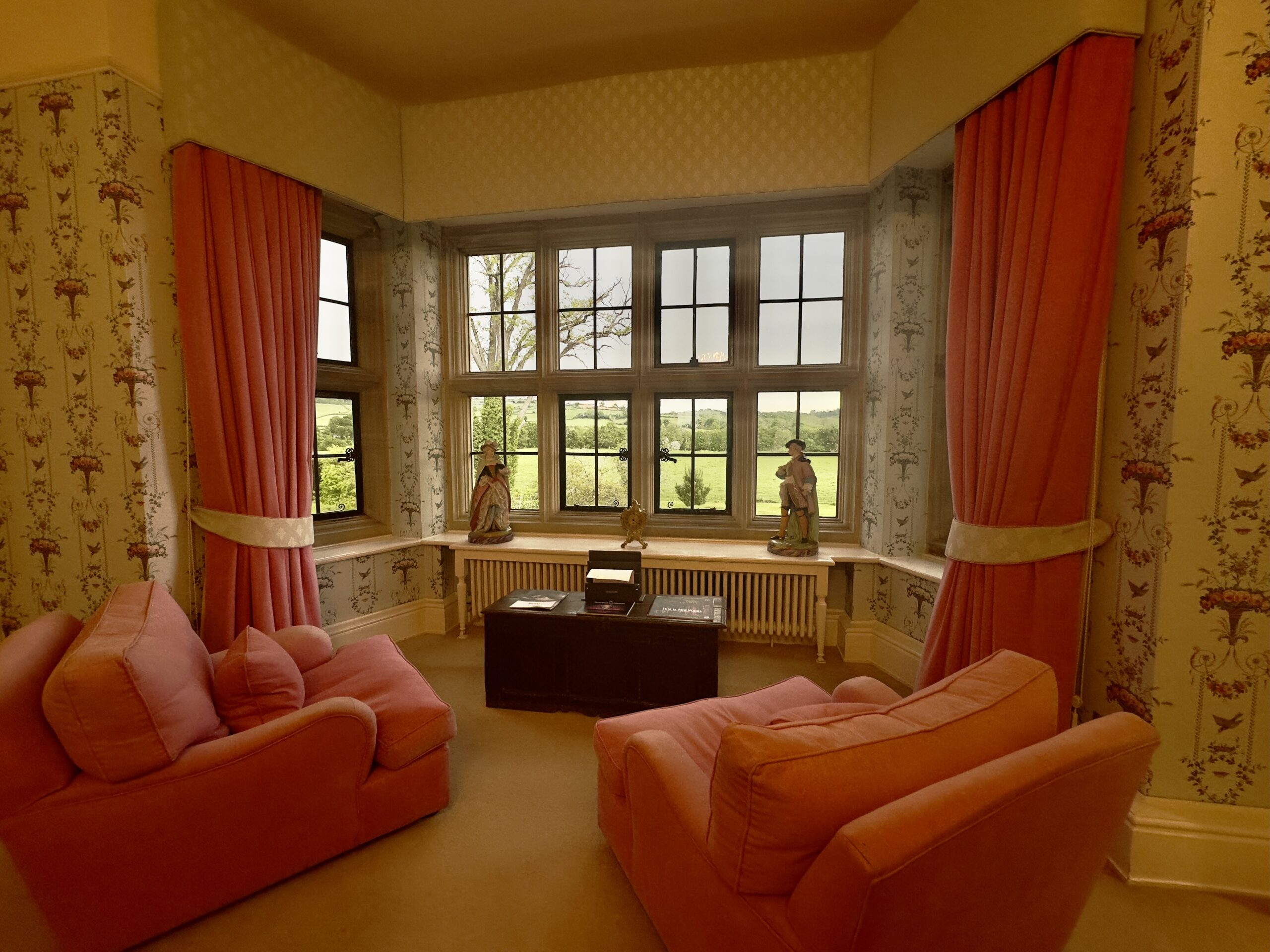
Bedroom designed by Laura Ashley at Llangoed Hall © Nancy Mueller Photos
Laugharne on the Taf Estuary
Day five brings us to “the strangest town in Wales,” affectionately so named by Welsh poet Dylan Thomas. Here at Browns Hotel, Thomas wrote the template for his seminal work, Under Milk Wood. So, how better to get us in the mood of following in his footsteps than by listening to a reading of his acclaimed story on our drive, then hoisting a pint at the hotel in his honor?

Poet Dylan Thomas’ writing shed in Laugharne, Wales © Nancy Mueller Photos
The tiny town of Laugharne has been immortalized through Thomas’ writings. Also through visits and writings by other literary luminaries like Margaret Atwood, Roald Dahl, and Mary Shelley. For Thomas, however, Laughharne was home. Here, his writing shed was built on the estuary. And he lived the last four years of his life in the cliffside Boathouse. A simple white cross marks the poet’s grave in St. Martin’s Churchyard north of town.
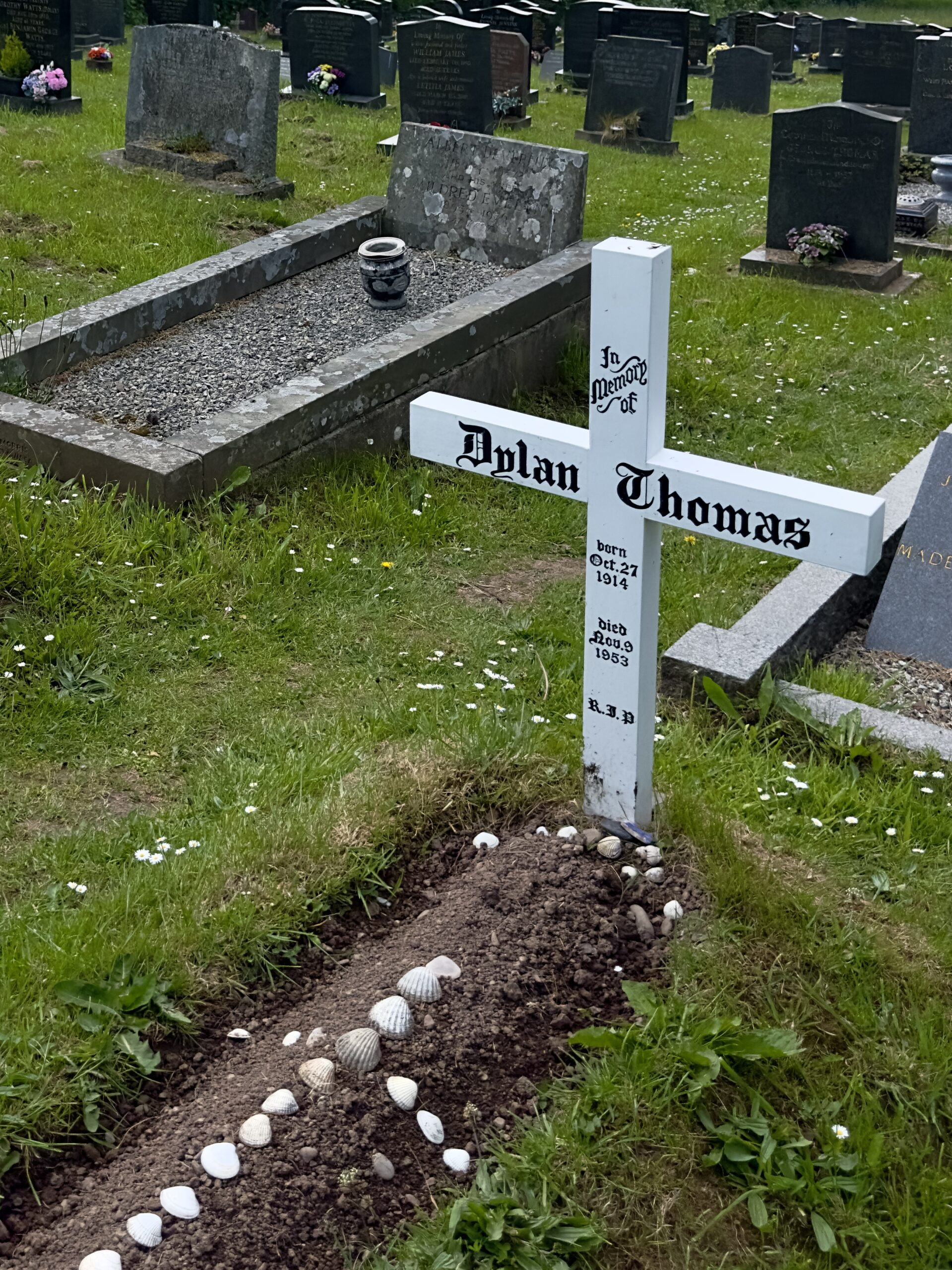
Poet Dylan Thomas’ gravesite in Laugharne, Wales © Nancy Mueller Photos
Seaside Resort of Tenby
On a balmy sunny day, it’s time for a beach walk on the wide sandy shores in the lovely town of Tenby (Dinbych-y-Pysgod, DIN-bikh uh PUS-god). Its name translates as “Little Fortress of the Fish.” Rows of pastel-colored Georgian townhomes overlook the tiny harbor. Fishermen and women sell their catches of the day from fishing boats.
It’s easy to see why the community has long been a favorite seaside attraction. The town’s medieval walls and ruins of a Norman castle on Castle Hill draw history buffs.
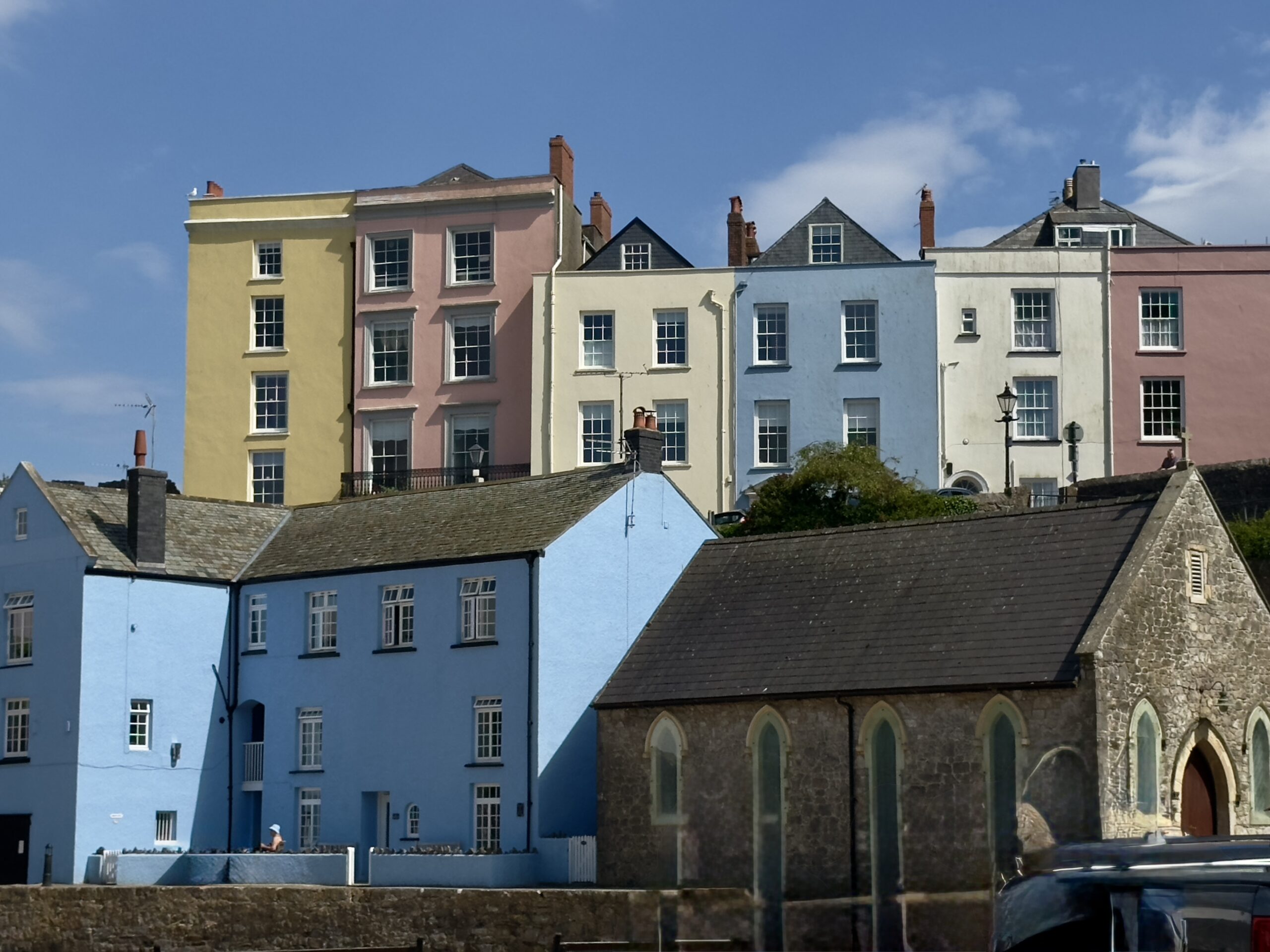
Seaside resort town of Tenby © Nancy Mueller Photos
Visitors can board a boat to the nearby Caldey Island. Or, simply pull up a seat on the sand and watch the waves ebb and flow. You can watch a lifeboat launch from the Tenby Lifeboat Station. Or view the Old Lifeboat Station, which has been converted into a grand family home. Along cobblestone streets, patrons can pop into pubs for a bite and brew or browse boutique gift shops.
The Grove in Narbeth
Our home for the night leads to the luxurious Grove estate in Narbeth, Pembrokeshire. The small, elegantly restored country home offers a haven for the world-weary, a peaceful environment surrounded by meadows and woodlands. Tranquil gardens and a freshwater pond invite guests to slow down, relax, and unwind.
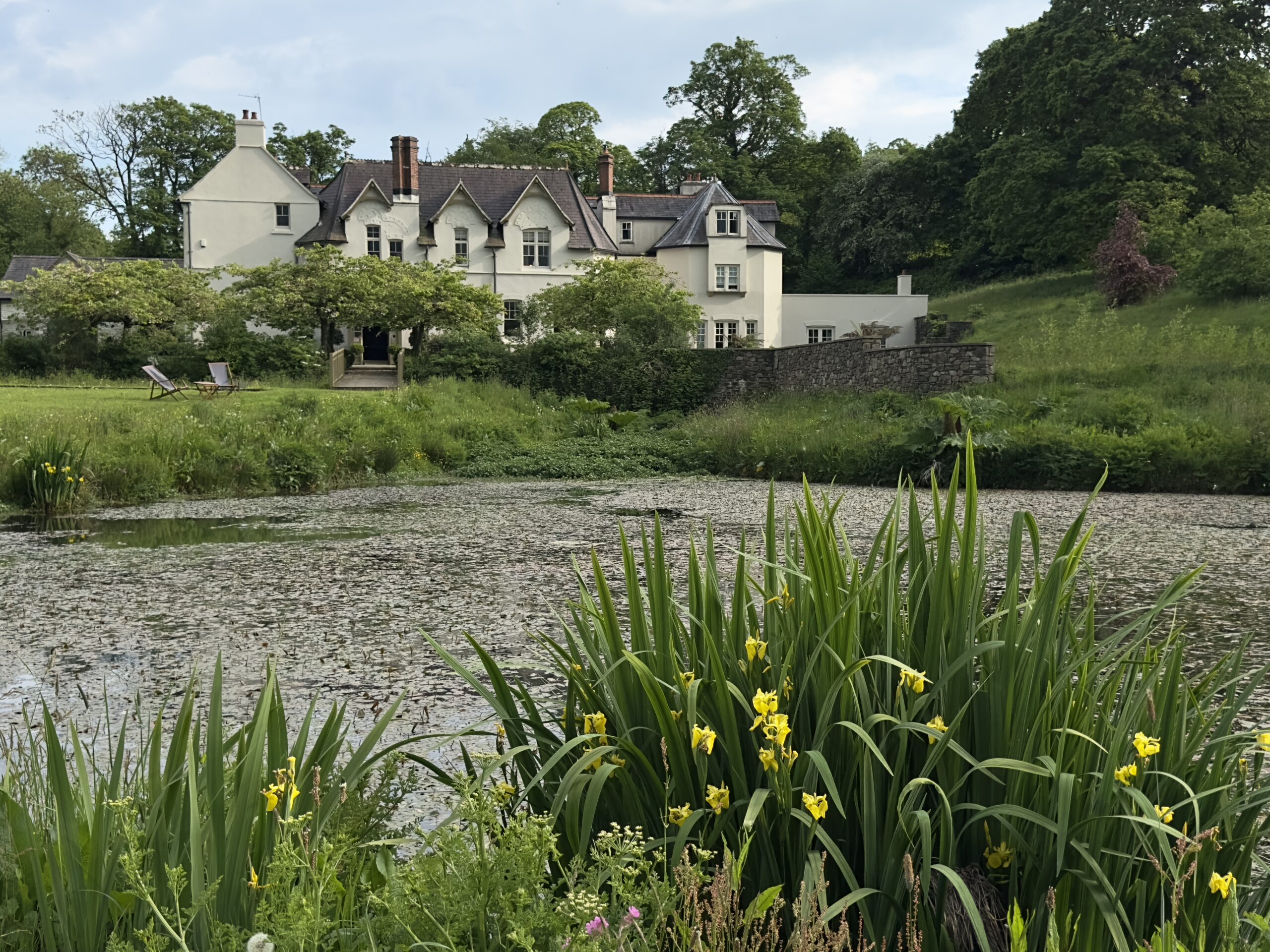
The Grove at Narbeth © Nancy Mueller Photos
Acclaimed for its exceptional hospitality and service, The Grove has been lovingly restored from its roots dating to the 15th century. Modern comfort meets Welsh decor in thoughtfully designed touches throughout the hotel. A collection of exquisitely hand-crafted Welsh love spoons adorns the wall across from the bed in my bedroom. Colorful spools of tapestry weaving threads are displayed under glass in the main living area.
Guests have two restaurant options. The Fernery, under the direction of Executive Chef Douglas Balish, features an elevated dining experience. For more relaxed dining, The Artisan Restaurant overlooks a garden setting. Both menus offer fresh, seasonal ingredients from the land (venison, lamb, rabbit), sea (oysters, lobster, cod), and local producers.
Cardiff
Cardiff is a dynamic city that attracts visitors from around the world. Scenic Cardiff Bay, stunning architecture, and arts and cultural venues are city highlights. From its earliest historical origins among Vikings, Romans, and Normans, and the development of its coal and iron industries, the capital city of Wales has grown into a large and busy urban center.
Our grand luxury road tour through Wales concludes here. But not before a visit to the magnificent Cardiff Castle in the city center. A last luxury stay at the city’s Five-Star Parkgate Hotel follows.
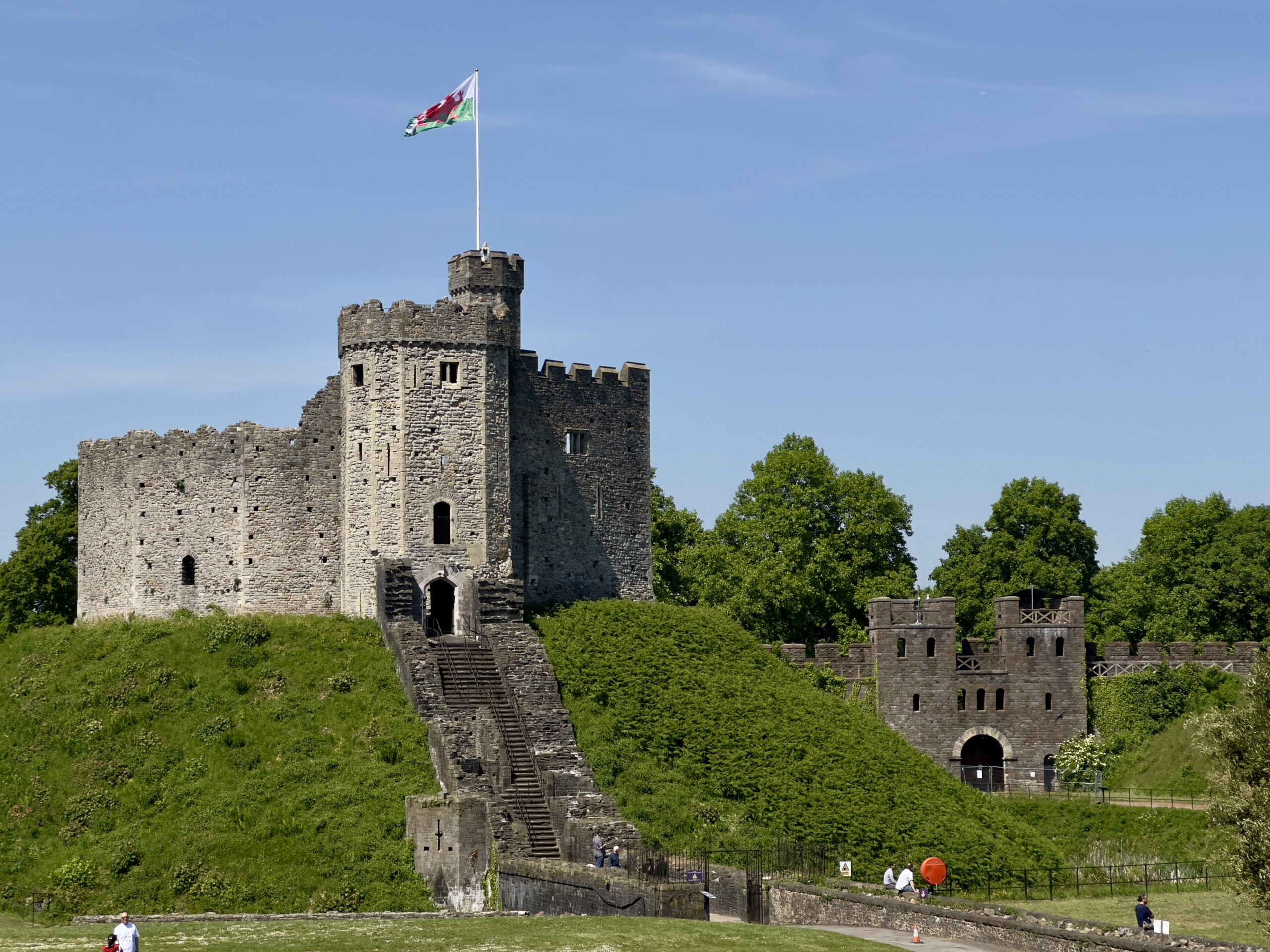
Cardiff Castle © Nancy Mueller Photos
Dazzling displays of craftsmanship showcase 2,000 years of history at Cardiff Castle. Every cranny and nook — and there are lots of crannies and nooks — tells a story. In collaboration with the 3rd Marquess of the Bute family, Architect William Burges created a resplendent Castle. Medieval murals, manuscripts, and opulently painted ceilings are among the highlights.
By the time we bed down for the night at the Parkgate Hotel, our night visions are filled with the warmth of the Welsh people we have met and the wonders we have seen along the way.
In six days, we have had a glimpse of hiraeth (HEE-ry-th), a feeling of longing for home that infuses the hearts of the Welsh people. That deep nostalgic feeling for Wales lingers within us, too, as our journey here comes to an end.

Author Nancy Mueller and Paddington Bear at Cardiff Castle © Nancy Mueller Photos
Thank you to Visit Wales for hosting my visit.
If You Go
Train and bus services from major UK locations offer fast and convenient ways to get to Wales. It typically takes two hours to travel from London to Cardiff by train. Add another hour for bus service.
You might also enjoy:

